Ashadh Krushna Panchami
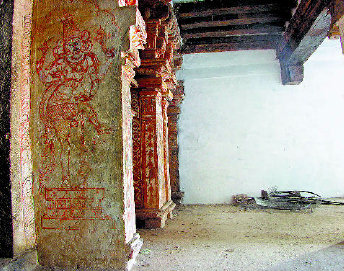 |
Photo: VANISHING LEGACY: At the Mannarkovil temple near Ambasamudram in Tamil Nadu, some surviving paintings juxtaposed with the whitewashed wall where a ceiling-high painting of Narasimha existed; Below is a photograph of the since-effaced Narasimha painting, taken in 2007.
Chennai: An array of striking paintings has been whitewashed out of existence at the Rajagopalaswamy Kulasekara Alwar temple at Mannarkovil in Tirunelveli district. These were images of the coronation of Rama, the Dasavataram, Narasimha, Garuda, a wrestler fighting an elephant and so on. Estimates put their antiquity at 150 to 250 years.
More recently, murals of the late Nayak period were whitewashed at Muthalamman temple at Kodangipatti, near Karur.
Over the past several years, similar mural masterpieces have been whitewashed at the Meenakshi temple in Madurai, the Arunachaleswarar temple at Tiruvannamalai, the Vishnu temple at Tiruvellarai near Tiruchi, and Siva temples at Patteeswaram near Kumbakonam, Tiruppulivanam in Kancheepuram district and Vedaranyam, all administered by the Hindu Religious and Charitable Endowments Department of the Tamil Nadu government.
Similar vandalism has been witnessed at other temples in the State, including the Varadarajaswamy temple in Kancheepuram, the Lakshmi Narasimhar temple at Sevilimedu, and the Sanjeeva Rayar temple at Iyengarkulam, both near Kancheepuram.
The latest round of effacement that has been revealed took place about six months ago in the name of renovation, and it is still under way. Sculptures on pillars and inscriptions have also been “cleaned” by sand-blasting: it involves training sand on them at high pressure. This is in violation of a Government Order that bans sand-blasting in temples as it damages sculptures and inscriptions. A sign-board at the temple says Rs. 8,16,000 will be needed for “sand-blasting (chemical wash)” for the renovation.
The Mannarkovil temple was built by Chera king Rajasimha in the 11th century A.D. for the Chola emperor Rajendra. It has an independent sub-shrine, belonging to the 13th century, devoted to the Vaishnavite saint Kulasekara Alwar, who spent his last days in Mannarkovil. It has inscriptions of the Chola and the later Pandya kings. It has three sanctum sanctorums.
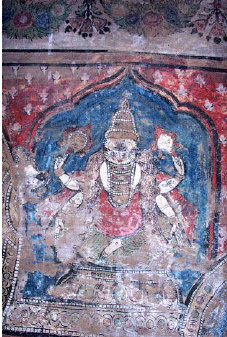 |
The murals that have been whitewashed existed on the side walls of themantapa (hall) in front of the sanctum on the first floor. While the paintings on the sanctum walls remain, those that were whitewashed include the scene of Rama’s coronation (pattabhishekam) and the Dasavataram on one side. On the opposite side, a masterpiece of Narasimha too has disappeared under coats of lime. Murals on the wooden beams supporting the roof have received coats of paint. Murals on the second floor mantapa, which underwent a gaudy restoration some decades ago, have been whitewashed.
K.T. Gandhirajan, a specialist in art history, said murals in the temples at Mannarkovil and the nearby Tirupudaimarudur, Edaikal and Kalakkadu, exhibited the rare characteristics of “the confluence of Tamil Nadu and Kerala schools of painting.” What was special about the Mannarkovil temple was that it had paintings on both walls and wood.
“The idea was that the halls should be replete with paintings. The artists must have used two types of pigments — one for the wall and another for the timber — because the colour schemes are different, ” he said.
P. Krishnan, during whose tenure as temple Executive Officer the murals were whitewashed, said he never gave permission for such work.
Source: hindu.com
Read More
 |
Hindu Genocide in KashmirOnline photo exhibition of Hindu genocide and temples destruction in Kashmir by local Muslims. |

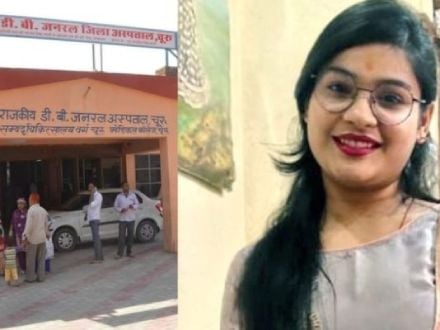 Rajasthan: Woman found hanging at a beauty parlour, Arshad, 3 others booked
Rajasthan: Woman found hanging at a beauty parlour, Arshad, 3 others booked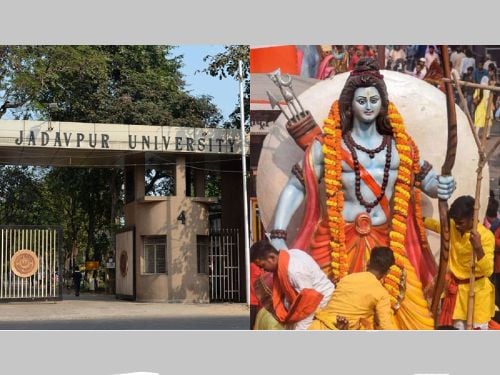 Jadavpur Univ revokes permission to celebrate Ram Navami on campus after granting it
Jadavpur Univ revokes permission to celebrate Ram Navami on campus after granting it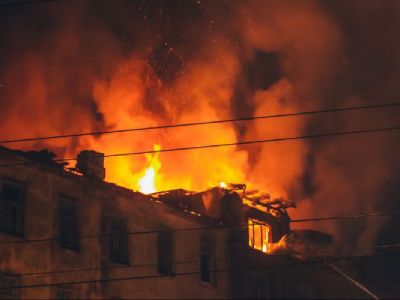 Andhra Pradesh: Farooq kills mentally challenged Hindu man for insurance money
Andhra Pradesh: Farooq kills mentally challenged Hindu man for insurance money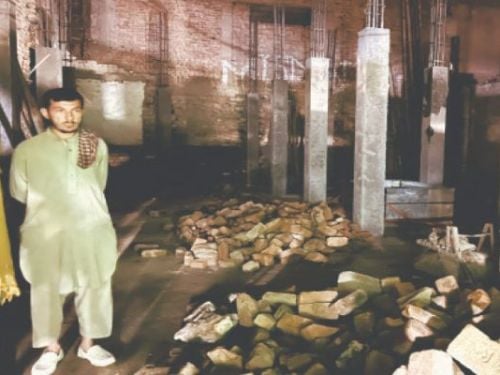 Pakistan: Ancient Hindu temple in Khyber Pakhtunkhwa demolished for commercial complex
Pakistan: Ancient Hindu temple in Khyber Pakhtunkhwa demolished for commercial complex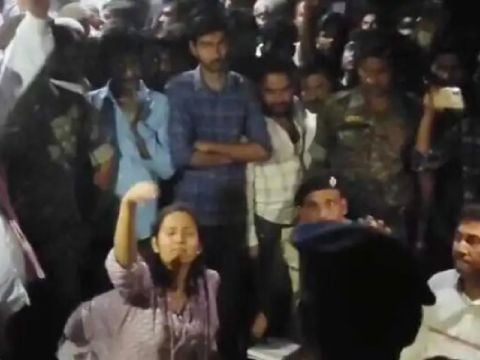 Bihar: Goddess Bhagavati Temple in Araria vandalised and deities damaged
Bihar: Goddess Bhagavati Temple in Araria vandalised and deities damaged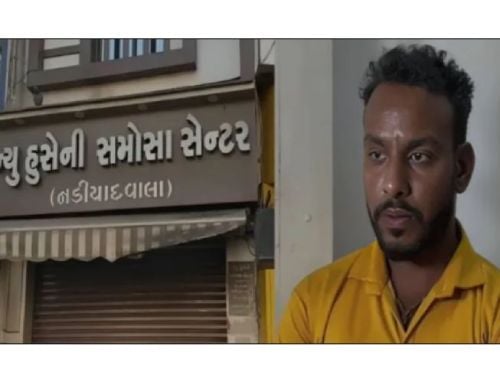 Vadodara: Beef supplier Imran Qureshi arrested in beef-stuffed samosa case
Vadodara: Beef supplier Imran Qureshi arrested in beef-stuffed samosa case